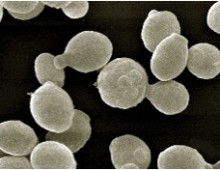Of Soil Carbon and Climate Change
Thanks to genome sequencing techniques such as those at the Department of Energy’s Joint Genome Institute in Walnut Creek, California, we now have a much better idea of what microbes are in soil, what they’re doing, and what proteins they’re producing. That’s important, because a handful of soil can teem with millions of microbes, some… [Read More]

